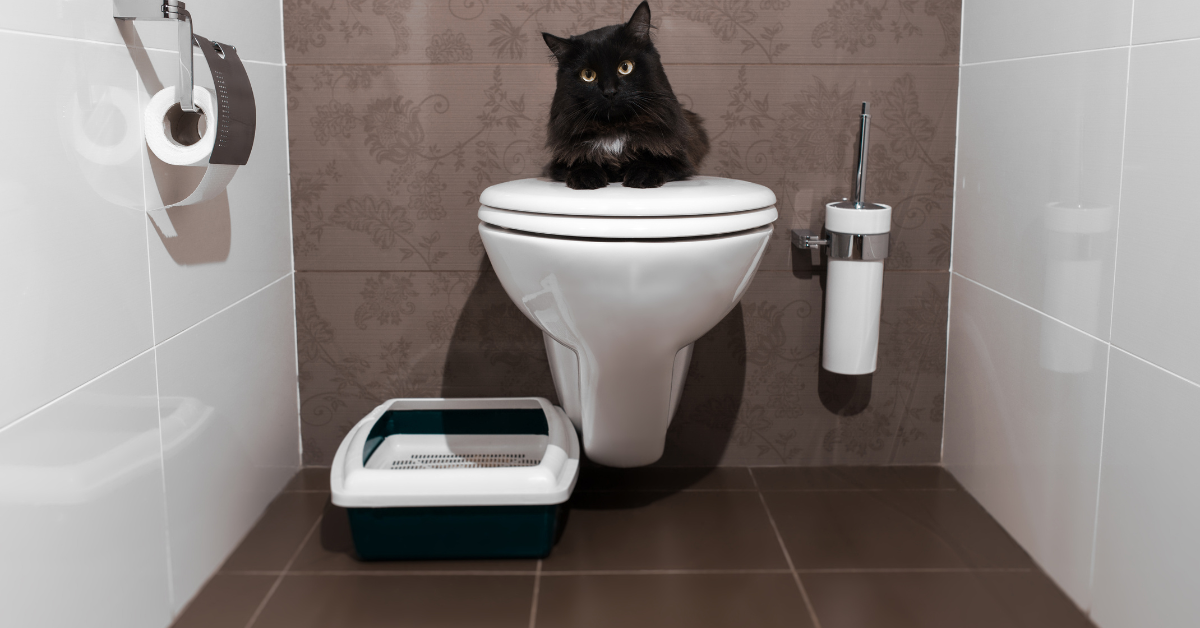Why Flushing Cat Poop Down Your Toilet Can Cause Problems - Tips for Safe Handling
Why Flushing Cat Poop Down Your Toilet Can Cause Problems - Tips for Safe Handling
Blog Article
Just about everyone may have his or her own thinking in relation to Can You Flush Cat Poop Down The Toilet?.

Introduction
As pet cat owners, it's essential to bear in mind exactly how we take care of our feline good friends' waste. While it may seem convenient to purge feline poop down the bathroom, this practice can have damaging consequences for both the environment and human health and wellness.
Ecological Impact
Purging feline poop presents dangerous virus and parasites into the water, positioning a substantial risk to aquatic environments. These impurities can negatively impact marine life and concession water quality.
Health Risks
In addition to environmental concerns, purging pet cat waste can also pose health threats to people. Feline feces might contain Toxoplasma gondii, a parasite that can trigger toxoplasmosis-- a potentially severe disease, especially for expecting females and people with damaged immune systems.
Alternatives to Flushing
Thankfully, there are more secure and extra liable means to get rid of cat poop. Think about the complying with alternatives:
1. Scoop and Dispose in Trash
One of the most usual method of disposing of feline poop is to scoop it right into an eco-friendly bag and throw it in the garbage. Make sure to make use of a devoted litter inside story and get rid of the waste without delay.
2. Use Biodegradable Litter
Select eco-friendly pet cat litter made from products such as corn or wheat. These clutters are eco-friendly and can be safely gotten rid of in the trash.
3. Hide in the Yard
If you have a yard, think about burying cat waste in a marked area away from vegetable yards and water resources. Make certain to dig deep adequate to stop contamination of groundwater.
4. Set Up a Pet Waste Disposal System
Purchase a family pet waste disposal system especially designed for feline waste. These systems make use of enzymes to break down the waste, decreasing odor and environmental effect.
Conclusion
Liable animal possession expands beyond supplying food and shelter-- it likewise includes correct waste administration. By refraining from purging pet cat poop down the bathroom and choosing different disposal techniques, we can decrease our ecological footprint and protect human wellness.
Why Can’t I Flush Cat Poop?
It Spreads a Parasite
Cats are frequently infected with a parasite called toxoplasma gondii. The parasite causes an infection called toxoplasmosis. It is usually harmless to cats. The parasite only uses cat poop as a host for its eggs. Otherwise, the cat’s immune system usually keeps the infection at low enough levels to maintain its own health. But it does not stop the develop of eggs. These eggs are tiny and surprisingly tough. They may survive for a year before they begin to grow. But that’s the problem.
Our wastewater system is not designed to deal with toxoplasmosis eggs. Instead, most eggs will flush from your toilet into sewers and wastewater management plants. After the sewage is treated for many other harmful things in it, it is typically released into local rivers, lakes, or oceans. Here, the toxoplasmosis eggs can find new hosts, including starfish, crabs, otters, and many other wildlife. For many, this is a significant risk to their health. Toxoplasmosis can also end up infecting water sources that are important for agriculture, which means our deer, pigs, and sheep can get infected too.
Is There Risk to Humans?
There can be a risk to human life from flushing cat poop down the toilet. If you do so, the parasites from your cat’s poop can end up in shellfish, game animals, or livestock. If this meat is then served raw or undercooked, the people who eat it can get sick.
In fact, according to the CDC, 40 million people in the United States are infected with toxoplasma gondii. They get it from exposure to infected seafood, or from some kind of cat poop contamination, like drinking from a stream that is contaminated or touching anything that has come into contact with cat poop. That includes just cleaning a cat litter box.
Most people who get infected with these parasites will not develop any symptoms. However, for pregnant women or for those with compromised immune systems, the parasite can cause severe health problems.
How to Handle Cat Poop
The best way to handle cat poop is actually to clean the box more often. The eggs that the parasite sheds will not become active until one to five days after the cat poops. That means that if you clean daily, you’re much less likely to come into direct contact with infectious eggs.
That said, always dispose of cat poop in the garbage and not down the toilet. Wash your hands before and after you clean the litter box, and bring the bag of poop right outside to your garbage bins.
https://trenchlesssolutionsusa.com/why-cant-i-flush-cat-poop/

Do you really like more info about Don’t flush cat feces down the toilet? Create feedback down the page. We will be pleased to listen to your thoughts about this blog entry. We hope that you visit us again in the future. If you please take a moment to share this article if you enjoyed reading it. Thank you so much for your time invested reading it.
Request Your Service Report this page